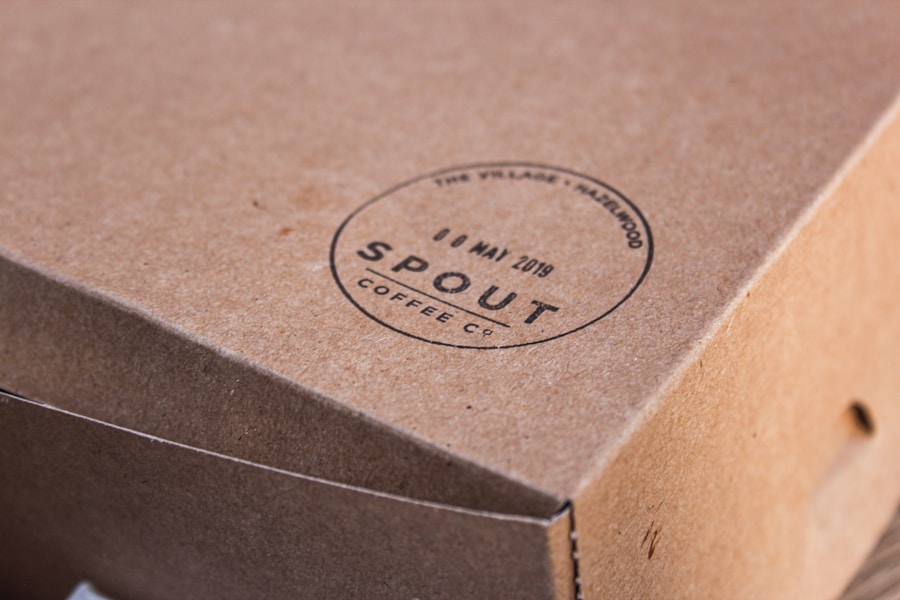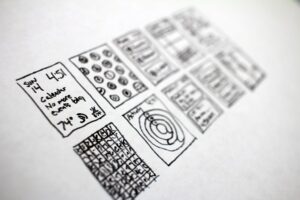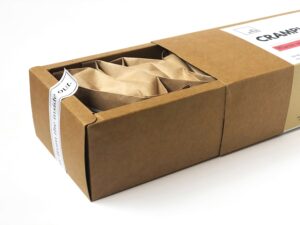When you think about the products you purchase, packaging often plays a pivotal role in your decision-making process. It’s not just a protective layer; it’s a powerful marketing tool that communicates the essence of a brand. Effective packaging design captures attention, evokes emotions, and can even influence your perception of the product inside.
You might not realize it, but the colors, shapes, and materials used in packaging can create an immediate connection with you as a consumer. This connection can lead to brand loyalty and repeat purchases, making packaging design an essential aspect of any product strategy. Moreover, packaging serves multiple functions beyond aesthetics.
It protects the product during transportation and storage, ensuring that what you buy is in perfect condition when it reaches your hands. It also provides essential information about the product, such as ingredients, usage instructions, and expiration dates. In a world where consumers are increasingly conscious of their choices, packaging design must balance visual appeal with functionality and information.
By understanding the importance of packaging design, you can appreciate how it shapes your shopping experience and influences your buying decisions.
Key Takeaways
- Packaging design plays a crucial role in attracting and engaging consumers, as it is often the first point of contact with a product.
- Identifying the target audience and staying updated on market trends is essential for creating packaging that resonates with consumers and stands out on the shelves.
- Branding and visual identity should be integrated into packaging design to create a cohesive and recognizable brand image.
- Incorporating sustainable and eco-friendly practices in packaging design not only benefits the environment but also appeals to environmentally conscious consumers.
- Choosing the right materials and printing techniques is important for ensuring the durability, functionality, and visual appeal of the packaging.
Identifying Target Audience and Market Trends
To create packaging that resonates with you, brands must first identify their target audience. This involves understanding your preferences, behaviors, and demographics. Are you a young professional seeking convenience?
Or perhaps a parent looking for safe and healthy options for your children? By pinpointing who you are and what you value, brands can tailor their packaging to meet your specific needs. This targeted approach not only enhances your experience but also increases the likelihood that you will choose one product over another.
In addition to understanding their audience, brands must stay attuned to market trends. The landscape of consumer preferences is constantly evolving, influenced by factors such as cultural shifts, technological advancements, and environmental concerns. For instance, you may have noticed a growing trend towards minimalistic designs or bold colors that stand out on crowded shelves.
By keeping an eye on these trends, brands can adapt their packaging strategies to remain relevant and appealing to you. This dynamic interplay between audience insights and market trends is crucial for creating packaging that not only attracts attention but also fosters a deeper connection with consumers like yourself.
Utilizing Branding and Visual Identity

Branding is more than just a logo; it encompasses the entire experience you have with a product. Packaging design is a critical component of this experience, as it serves as a visual representation of the brand’s identity. When you see a familiar logo or color scheme on a package, it can evoke feelings of trust and familiarity.
This is why brands invest heavily in creating cohesive visual identities that resonate with their target audience. The right packaging can reinforce brand values and communicate what the brand stands for, making it easier for you to connect with it on an emotional level. Visual identity in packaging goes beyond mere aesthetics; it also plays a role in differentiation.
In a crowded marketplace, where countless products vie for your attention, unique packaging can set a brand apart from its competitors. Whether it’s through innovative shapes, striking graphics, or clever use of typography, effective branding in packaging can create a memorable impression that lingers in your mind long after you’ve left the store. By understanding how branding and visual identity work together in packaging design, you can appreciate the thought and strategy that goes into creating an engaging product experience.
Incorporating Sustainable and Eco-Friendly Practices
| Metrics | Data |
|---|---|
| Reduction in Carbon Emissions | 20% decrease in carbon emissions compared to previous year |
| Energy Consumption | 30% reduction in energy consumption through energy-efficient practices |
| Water Conservation | Implemented water-saving measures resulting in 15% reduction in water usage |
| Waste Management | Diverted 50% of waste from landfills through recycling and composting |
| Sustainable Sourcing | 80% of materials sourced from sustainable and eco-friendly suppliers |
As a consumer, you are increasingly aware of the environmental impact of your choices. This awareness has led many brands to adopt sustainable and eco-friendly practices in their packaging design. You may have noticed more products featuring recyclable materials or biodegradable options that align with your values.
By prioritizing sustainability in packaging, brands not only appeal to your eco-conscious mindset but also contribute to a larger movement towards environmental responsibility. Incorporating sustainable practices into packaging design involves careful consideration of materials and processes. Brands are now exploring alternatives to traditional plastics, opting for materials that minimize waste and reduce carbon footprints.
This shift not only benefits the planet but also enhances your perception of the brand as socially responsible. When you choose products with eco-friendly packaging, you are making a statement about your values and supporting companies that prioritize sustainability. By understanding the importance of eco-friendly practices in packaging design, you can make informed choices that align with your beliefs.
Choosing the Right Materials and Printing Techniques
The choice of materials and printing techniques is crucial in creating effective packaging that meets both aesthetic and functional requirements. As a consumer, you may not always think about what goes into the packaging of the products you buy, but these choices significantly impact your experience. For instance, sturdy materials ensure that products arrive safely at your doorstep or on store shelves, while lightweight options can reduce shipping costs and environmental impact.
Printing techniques also play a vital role in how packaging looks and feels. High-quality printing can enhance visual appeal and ensure that colors are vibrant and true to life. You might be drawn to packages with intricate designs or textures that invite touch; these elements can elevate your overall experience with the product.
Brands must carefully consider these factors to create packaging that not only protects but also captivates you as a consumer. By understanding the importance of materials and printing techniques in packaging design, you can appreciate the craftsmanship behind the products you love.
Creating Functional and User-Friendly Packaging

When it comes to packaging design, functionality is key. You want packaging that is easy to open, resealable if necessary, and designed with your convenience in mind. Brands that prioritize user-friendly packaging enhance your overall experience by making it simpler for you to access and use their products.
For example, consider how frustrating it can be to struggle with overly complicated packaging; this can lead to dissatisfaction even before you’ve had a chance to enjoy the product itself. User-friendly design also extends to considerations such as size and portability. You may prefer products that fit easily into your bag or are designed for on-the-go consumption.
Brands that take these factors into account demonstrate an understanding of your lifestyle and needs. By creating functional packaging that aligns with your expectations, they not only improve usability but also foster positive associations with their brand. Understanding the importance of functionality in packaging design allows you to appreciate how thoughtful design enhances your overall product experience.
Implementing Effective Communication and Information Design
Effective communication is essential in packaging design; it ensures that you receive all necessary information about the product at a glance. Clear labeling helps you understand what you’re purchasing, including ingredients, usage instructions, and any relevant warnings or certifications. In today’s fast-paced world, where consumers often make quick decisions while shopping, concise communication is vital for capturing your attention and providing reassurance about your choices.
Information design goes beyond just text; it encompasses how information is organized visually on the package. You may find yourself drawn to packages that use icons or infographics to convey information quickly and effectively. This approach not only makes it easier for you to digest information but also enhances the overall aesthetic appeal of the package.
Brands that excel in communication through effective information design create an engaging experience for consumers like yourself, ensuring that you feel informed and confident in your purchasing decisions.
Navigating Legal and Regulatory Requirements
Finally, navigating legal and regulatory requirements is an essential aspect of packaging design that directly impacts you as a consumer. Brands must comply with various regulations regarding labeling, safety standards, and environmental claims to ensure that their products are safe for consumption and accurately represented. This compliance protects you from misleading information and ensures that the products you purchase meet established safety standards.
Understanding these legal requirements can also empower you as a consumer. When brands adhere to regulations regarding transparency and safety, they build trust with you—an essential component of any successful brand-consumer relationship. As you become more aware of these regulations, you can make informed choices about the products you support based on their commitment to compliance and ethical practices.
By recognizing the importance of legal considerations in packaging design, you can appreciate how they contribute to your overall confidence in the products you choose to buy. In conclusion, effective packaging design is multifaceted, encompassing everything from aesthetics to functionality and sustainability. By understanding these various elements—target audience identification, branding strategies, material choices, user-friendliness, communication effectiveness, and legal compliance—you gain insight into how brands create meaningful connections with consumers like yourself.
As you navigate the marketplace, this knowledge empowers you to make informed choices that align with your values while enhancing your overall shopping experience.
If you are interested in professional packaging design, you should check out the portfolio of Blur&Co at https://www.blurandco.com/portfolio-5/. Their work showcases stunning and innovative packaging designs that are sure to inspire. Additionally, you can visit their blog at https://www.blurandco.com/blog/ for insights and tips on the latest trends in packaging design.
FAQs
What is professional packaging design?
Professional packaging design is the process of creating the exterior of a product’s package with the goal of attracting consumers and protecting the product. It involves the use of graphic design, branding, and structural engineering to create a visually appealing and functional package.
Why is professional packaging design important?
Professional packaging design is important because it can significantly impact a product’s success in the market. A well-designed package can attract consumers, communicate the brand’s message, and differentiate the product from competitors. It also plays a crucial role in protecting the product during transportation and storage.
What are the key elements of professional packaging design?
The key elements of professional packaging design include graphic design, typography, color scheme, imagery, branding, structural design, and material selection. These elements work together to create a package that is visually appealing, communicates the brand’s message, and protects the product.
How does professional packaging design impact consumer behavior?
Professional packaging design can influence consumer behavior in several ways. It can attract attention on the shelf, communicate the product’s benefits, and create an emotional connection with the consumer. A well-designed package can also convey quality and value, which can influence purchasing decisions.
What are the benefits of investing in professional packaging design?
Investing in professional packaging design can lead to several benefits, including increased brand recognition, improved shelf presence, enhanced consumer perception, and ultimately, higher sales. A well-designed package can also contribute to a positive customer experience and build brand loyalty.




